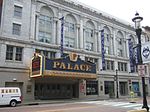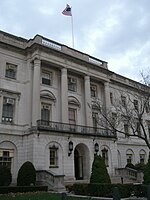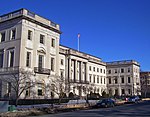Waterbury, Connecticut

Waterbury is a city in the U.S. state of Connecticut on the Naugatuck River, 33 miles (53 km) southwest of Hartford and 77 miles (124 km) northeast of New York City. Waterbury is the largest city in the Naugatuck Valley Planning Region and second-largest city in New Haven County. According to the 2020 US Census, in 2020 Waterbury had a population of 114,403. As of the 2010 census, Waterbury had a population of 110,366, making it the 9th largest city in New England and the 5th largest city in Connecticut.Throughout the first half of the 20th century, Waterbury had large industrial interests and was the leading center in the United States for the manufacture of brassware (including castings and finishings), as reflected in the nickname the "Brass City" and the city's motto Quid Aere Perennius? ("What Is More Lasting Than Brass?"). It was also noted for the manufacture of watches and clocks (Timex). The city is alongside Interstate 84 (Yankee Expressway) and Route 8 and has a Metro-North railroad station with connections to Grand Central Terminal. Waterbury is also home to Post University and the regional campuses of the University of Connecticut, University of Bridgeport, Western Connecticut State University as well as Naugatuck Valley Community College.
Excerpt from the Wikipedia article Waterbury, Connecticut (License: CC BY-SA 3.0, Authors, Images).Waterbury, Connecticut
West Main Street, Waterbury
Geographical coordinates (GPS) Address Nearby Places Show on map
Geographical coordinates (GPS)
| Latitude | Longitude |
|---|---|
| N 41.556111111111 ° | E -73.041388888889 ° |
Address
West Main Street 21
06702 Waterbury
United States
Open on Google Maps











